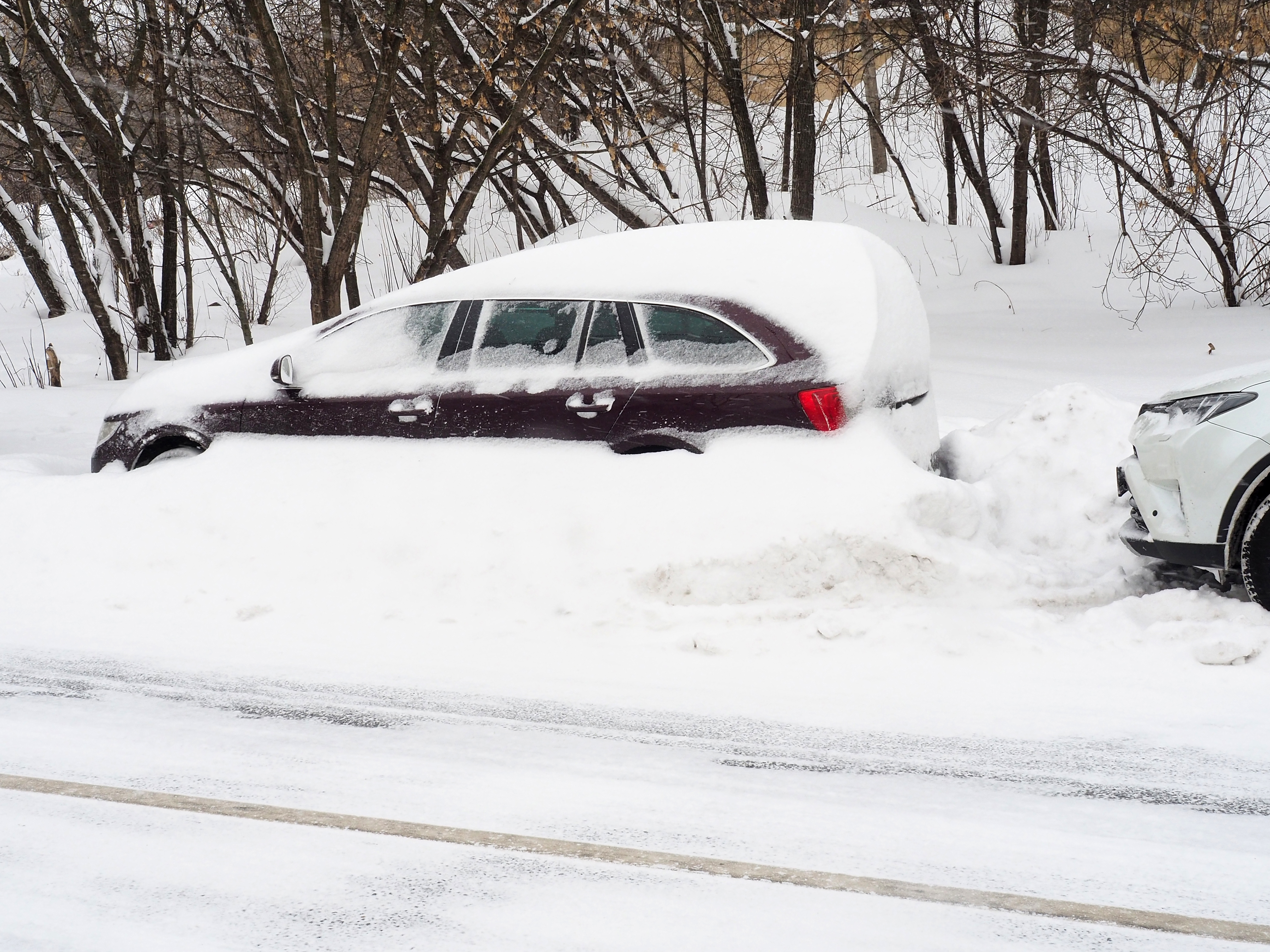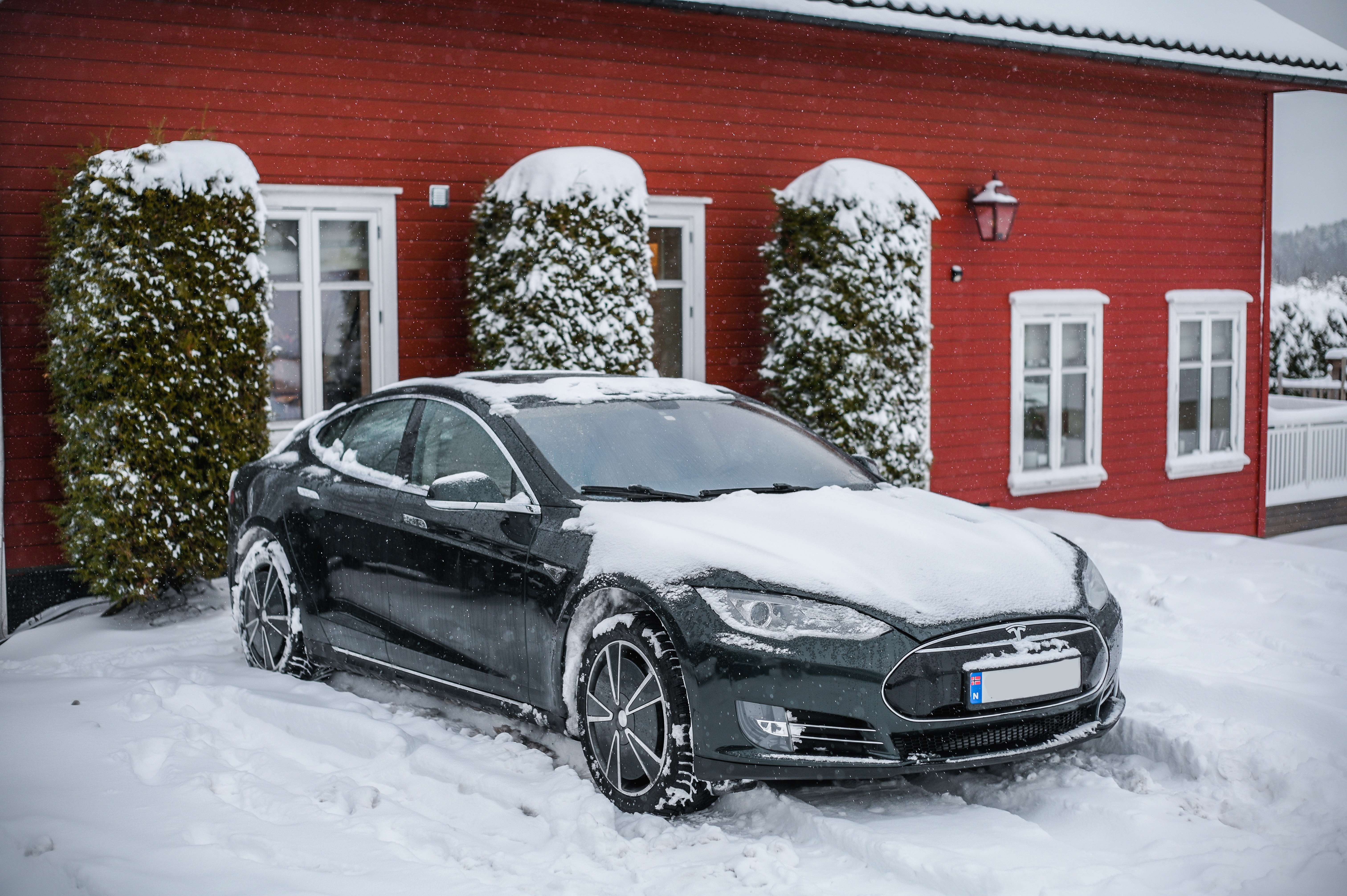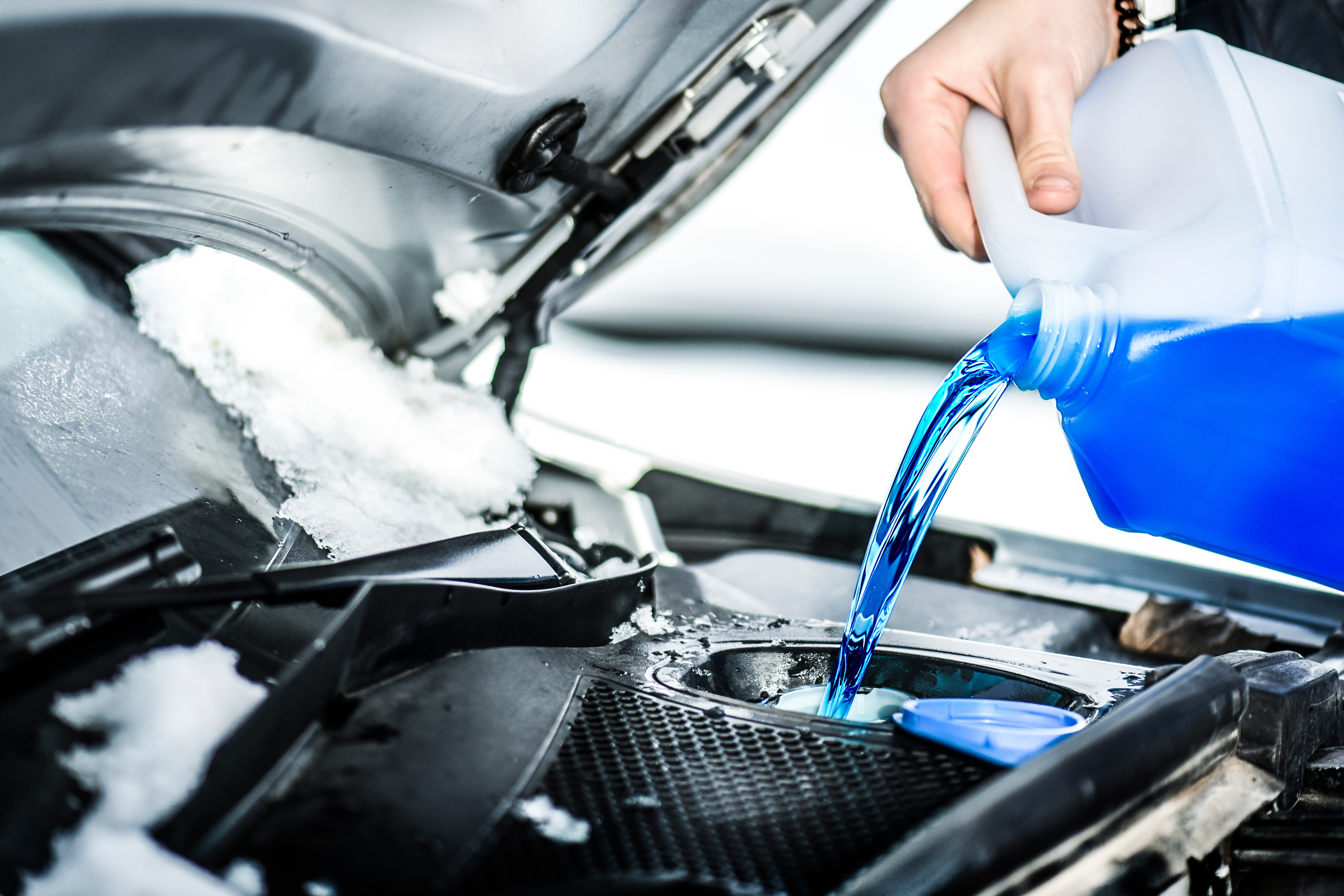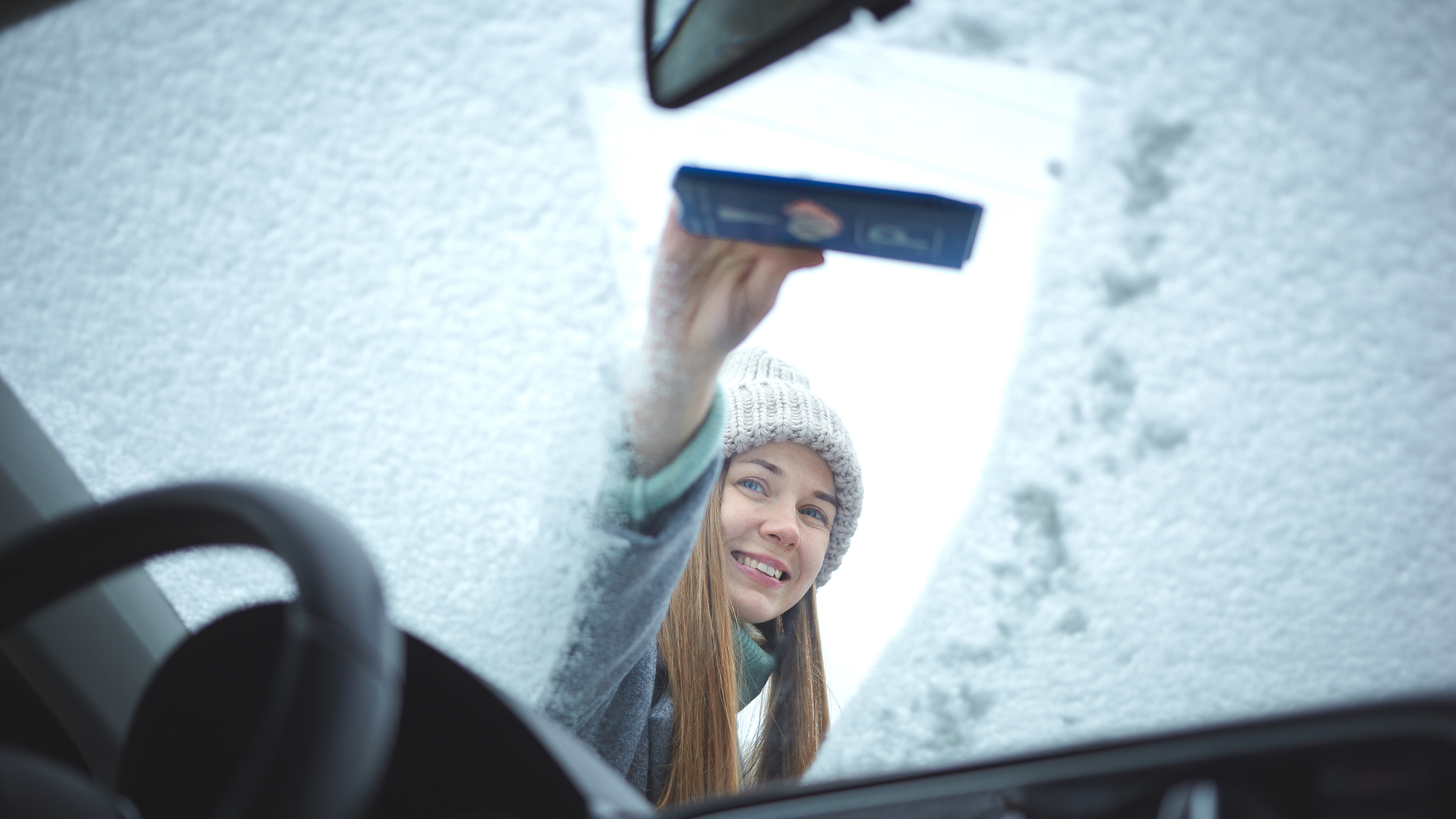How to drive in the snow
Stay safe on the road this winter

Figuring out how to drive in the snow is no easy task, regardless of whether you’ve been on the roads 20 years or 20 days. You may be comfortable and competent on dry roads, but driving in the snow is another thing entirely. It can be pretty daunting if you're not used to driving on snow and ice-covered roads.
But it doesn’t have to be, and we’ve compiled this list with helpful advice for anyone heading out onto frozen roads. It doesn’t matter how much experience you have, or even if you have a snow-friendly car like the Polestar 2 Arctic Circle, this is all worth bearing in mind. Here are our essential tips on how to drive in the snow safely.
How to drive in the snow
1. Accelerate gently
Snow and ice doesn’t give much for your tires to grip onto, and quick and sudden application of the gas and brake pedals is more likely to make you slip and skid around. Make sure to lower your foot gently and smoothly, while keeping engine revs fairly low.
2. Turn on winter driving mode (if you have it)
If your car has a dedicated driving mode for winter or icy conditions, be sure to turn it on. This essentially takes first gear out of use, since setting off in second gear can get you moving without as much risk of the wheels slipping. Manual transmissions can get the same effect by setting off in second gear, and gently releasing the clutch.
3. Increase your stopping distance
Get instant access to breaking news, the hottest reviews, great deals and helpful tips.
Snow is slippery, which means less friction to help slow you down. So be sure to account for this by leaving extra space between you and the car in front. AAA recommends a stopping time of five to six seconds to avoid rear-ending whoever’s ahead of you.
4. Know how to deal with skidding
It’s easy to panic if your car starts skidding, but as clichéd as it sounds that’s only going to make things worse. Keep calm and figure out which wheels are skidding, and act accordingly.
If your front wheels are skidding, simply ease off the gas and stay off the brakes. Once the wheels regain traction, gently turn the steering wheel to point them in the right direction.
If your rear wheels start skidding, you have to turn the steering wheel the same direction that the back of your car is moving, ease off the gas pedal and stay clear of the brakes. Once they regain traction, steer back in the direction you actually want to go. If you concentrate on where you want to go, rather than where your car is actually doing, you should be able to self-correct pretty easily.

5. Anti-lock brakes are your friend
If you’re in a skid that you can’t recover from, or you need to stop as quickly as possible, your anti-lock brake system (ABS) can come to the rescue. Push down hard on the brake pedal, and don’t let go — even if the car shudders as the ABS activates.
Most important, however, is that you continue to steer around obstacles. ABS lets you do both, and this will help you avoid hitting something before you regain control.
6. Know how to handle hills
If you’re struggling to get up a snow-laden hill, it’s easy to put your foot down in the hopes that some extra power will get you moving the right way. But all this does is increase the likelihood of your wheels spinning — and you going nowhere. Try to get some momentum before you attempt the hill, and avoid stopping while going uphill if you can; otherwise all your inertia will be lost.
7. Drive slowly downhill
Going downhill means gravity is doing what it does best, which presents some challenges. The key is to take it all slowly, especially as you’re coming over the crest of a hill. Downshift if you can — especially if you’re driving a manual — since this will limit your speed, and avoid using the brakes if you can help it.
It’s also important not to turn the wheels while steering or accelerating, since this can decrease traction and increase the likelihood of skidding.

8. Use your headlights
It may seem like common sense, but if there’s some pretty heavy snowfall, you will need to turn on your headlights. If visibility gets even worse, below 300 feet or so, turn on your fog lamps. This isn’t just to help you see what’s ahead, but also so other cars can see you in the murk.
9. Stick to major roads
If you're in a place that’s prepared for snow, chances are there’s infrastructure in place to clear the roads and make driving easier — whether that’s salt spreaders, snow plows or both. Major roadways will get the most attention, while side streets may not be important or big enough to warrant work until later.
Plowed or salted roads will have significantly less snow and ice coverage, which makes them easier to drive on compared to the untreated streets.
10. Give yourself more time to travel
Driving in the snow is going to slow you and all the other drivers down. So if you have to drive, be sure to give yourself more time to get around. Driving in slippery conditions is bad enough, but factor in the stress of being late and you’re a four-wheeled accident waiting to happen.

11. Be aware of what’s happening around you
Awareness on the road is important in the best of conditions, but it’s especially important when it’s snowy out. Always be mindful of the road ahead, so you can prepare yourself and your care. Whether it’s an upcoming hill, or a piece of road that may be extra icy thanks to a lack of direct sunlight, knowing what’s ahead gives you more of an opportunity to act accordingly.
Likewise, be more alert to what other drivers are doing, because there’s no guarantee that they know what they’re doing. By keeping tabs on what they’re doing, and keeping a respectful distance, you have more time to react and avoid collisions or other problems.
12. Make sure you and your car are prepared before you leave
It pays to be prepared for whatever winter might throw your way, especially if you live in an area that gets a lot of snowfall. By making sure your car is prepared to drive in snow and cold weather, you’re going to make life a lot easier until the weather starts warming up again.
How to prepare your car for driving in the snow
1. Think about investing in winter tires.
This is especially important in areas that get a lot of snow, since winter tires have a deeper tread and increased grip. What’s more, winter tires are generally made of rubber that can better withstand cold temperatures and stay flexible. This means you’re going to get better braking and handling performance during the winter —especially in snowy, icy, or wet conditions.
It's worth remembering that winter tires don't necessarily decrease your fuel efficiency (or electric car range). The purpose of the tires is twofold — maximize grip and ensure the best efficiency in winter conditions. Not tires are created equally, but even the least efficient winter tires will function better than summer tires.
2. Check your tire pressure
Cold temperatures make things compress, including the air in your tires. So when the weather gets colder, be sure to check the internal pressure is where it should be. Incorrect tire pressure can increase wear, shortening tire lifespan in the process, and causes more drag — which affects your fuel economy/range.

3. Pack some snow chains, and learn how to use them
If you’re in a pinch, and the road is completely covered with compacted snow or ice, snow chains can dramatically improve your grip and get you moving. Just be sure you know how to apply them before an emergency occurs, and that you don’t use them on a bare road surface.
4. Keep your battery charged
Cold weather is notoriously bad for batteries, since cold temperatures affect the chemical process that lets your battery store electricity. In short, the colder the battery, the less power it can store.
It’s worth recharging your battery at least once a week, especially if the battery itself is more than three years old. You can do this with a trickle charger, or by running the engine. And, in case of emergencies, make sure you know how to jump start your car.

5. Check your wipers and wiper fluid
Liquids don’t fare well in the cold, so it’s important to check your wiper fluid before you set off. The freezing point of wiper fluid is pretty low, so it doesn’t happen often, but it does still occur and it’s better to be safe. Likewise, make sure your wipers aren’t frozen to the windshield, since trying to use them in this condition can damage the control mechanism.
6. Defrost your windshield
You need full visibility when you’re driving, so you know what’s happening around you and because it’s usually against the law not to. So it’s important to know how to defrost your windshield, and help yourself out on the road much faster.
7. Clear snow and ice off your car
If you leave your car outside, or you get caught in some heavy snowfall, always make a point of clearing the snow and ice off your car — not just the windshield, but the roof and hood, too. It only takes a couple of minutes, and by removing it yourself, it’s not going to fall off and either injure someone or cause damage while you're driving.

8. Dress warm
The last thing you want is to get stuck in the snow while wearing little more than a T-shirt and shorts. So always make sure to dress appropriately for the weather when you’re driving. Best case scenario, you save a little power by not having to heat the car as much. Worst case, you’re wrapped up warm in case something goes wrong.
9. Keep emergency supplies in your trunk
It’s never a bad idea to keep one of the best emergency car kits in your trunk, just in case. In fact there are several pre-made kits with things like jumper cables, a torch, hi-vis gear, and so on. Winter is a different beast, however, so make sure to add some season-appropriate things.
What you need depends on how bad the snow gets, but it’s worth keeping a foldable snow shovel, warm gloves, ice scraper, brush, a can of de-icer, a blanket, hand warmers, salt or sand (cat litter will also work) for melting built-up snow, a USB backup battery, bottled water and some candy bars. Hopefully you won’t need any of it, but it always pays to be prepared.
Now you know how to drive in the snow, be sure to check out some other useful car tips. Make sure you know how to jump start your car, since batteries don't fair so well in the cold, how to defrost your windshield and make sure you know how to remove ice from a driveway.
If you're swapping tires over the winter months, make sure you know all about the relationship between electric cars and winter tires — especially what happens to your range.

Tom is the Tom's Guide's UK Phones Editor, tackling the latest smartphone news and vocally expressing his opinions about upcoming features or changes. It's long way from his days as editor of Gizmodo UK, when pretty much everything was on the table. He’s usually found trying to squeeze another giant Lego set onto the shelf, draining very large cups of coffee, or complaining about how terrible his Smart TV is.
